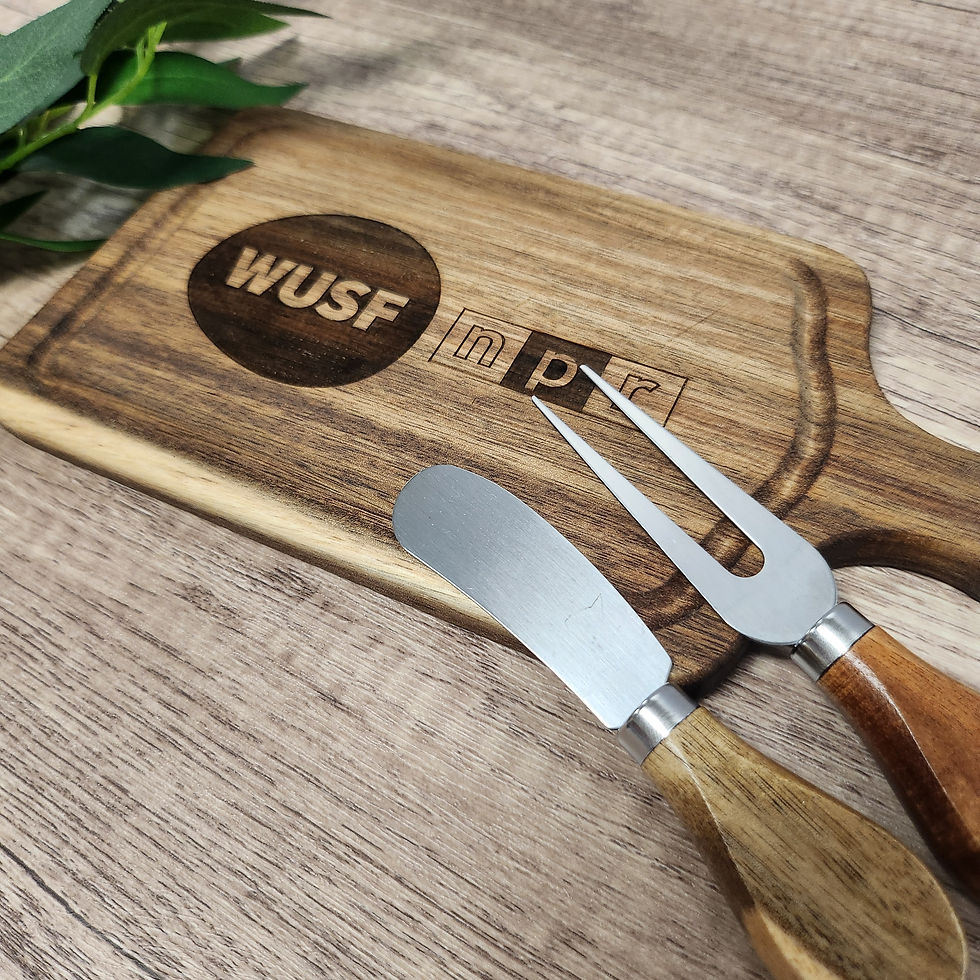What Happens If Your Material Isn’t Laser Engraver Safe?
- busybeelaser
- 2 days ago
- 4 min read

If you’ve ever thought, “Hey, I’ll just toss this in the laser and see what happens,” you’re not alone. Every engraver has had that moment of curiosity. But not every material reacts the same way to a laser—some can go very wrong, very fast.
What might look like a simple plastic, wood, or coated item can sometimes melt, burn unevenly, or worse—release toxic fumes. Knowing what’s laser-safe is essential for clean results, machine longevity, and your own safety.
At Busy Bee Custom Engraving, we work with a wide range of materials and bring years of experience to every job. Here’s what can go wrong with the wrong material, how to check for safety, and how to know what works.
The meltdown (literally)
Some plastics look like acrylic or seem solid enough, but under a laser they warp, bubble, or start to melt around the edges. That’s usually a sign the material isn’t heat-stable or designed for engraving.
One of the biggest issues is misidentification. For example, cast acrylic engraves beautifully and cleanly. But polystyrene or other low-grade plastics can soften under heat, distort the image, or leave residue. Materials like these often come from imported products or promotional items that weren’t made with lasers in mind.
This is why we always verify the type of material and, if needed, test a small, hidden area first. That way, if a material reacts poorly, we catch it before any visible engraving is attempted.
Fumes you don’t want to breathe
Safety isn’t just about the item—it’s also about what happens when it’s exposed to heat. Certain materials release toxic fumes that are harmful to people and damaging to the equipment.
PVC is the most well-known example. When it’s lasered, it gives off chlorine gas and corrosive byproducts that can permanently damage machine components. But it’s not always labeled clearly. PVC can hide in items like:
Vinyl binders or decals
Synthetic leathers
Some foams or plastic boards
Other risky materials include some painted metals, laminates, or foams with unknown fillers. Even wood products can be questionable if they contain strong adhesives or finishes that react poorly to heat.
To stay on the safe side, we often refer to Safety Data Sheets (SDS). If a customer provides a product name or manufacturer, we can often locate the SDS online. These documents break down the chemical composition of the item and will often indicate whether it contains chlorine or other materials that produce hazardous fumes. If an SDS isn’t available, we evaluate the item based on known material characteristics and perform a controlled test if needed.
Sometimes it just doesn’t engrave well
Even if a material is technically safe to engrave, that doesn’t mean it will produce a clean or attractive result. Inconsistent density, unusual surface textures, or coatings that react poorly to heat can leave burn marks, discoloration, or low contrast.
For example:
Powder-coated items can look fantastic when engraved, but if the coating is too thick or uneven, the result can look blotchy or inconsistent unless settings are dialed in just right.
Dyed or treated woods may char or fade unevenly depending on how the dye reacts to the laser.
Coated tumblers from certain brands may engrave beautifully, while others flake or discolor.
This is why we always assess the material and, if needed, run a spot test on an inconspicuous area to evaluate the finish before proceeding with a full engraving.
Experience makes a difference
One of the biggest advantages of working with a professional engraver is experience. Over time, we’ve handled enough materials to know what works just by looking or feeling.
There are physical cues—texture, weight, finish—that help identify whether a product is likely to engrave well. Cast acrylic feels denser and cuts cleaner than extruded. Certain powder coatings have a satin feel that indicates a higher chance of clean contrast. Even sanding or wiping down a surface can give clues about the composition or coating.
While we still take precautions, that experience means we can often make a confident call much faster, and avoid wasted time or risk.
How we handle it at our shop
When someone brings in their own items, we’ll ask questions about what the material is and where it came from. If it’s something we’ve worked with before, we know what to expect. If it’s unfamiliar, we’ll carefully evaluate the item and run a small test if needed.
We never engrave questionable materials without verifying safety first. That includes checking the item itself, reviewing product data when available, and relying on hands-on experience.
We also maintain a running list of trusted brands, coatings, and material types that we’ve tested and approved—everything from stainless steel tools to powder-coated tumblers, branded wood products, and more.
Final thoughts
Laser engraving is as much about understanding materials as it is about design. Knowing what’s safe, what reacts well, and what to avoid is the difference between a great result and a ruined item—or worse, a safety hazard.
If you’re not sure whether something is safe to engrave, don’t guess. Give us a call, send a picture, or bring it by the shop. We’re happy to take a look, walk you through the options, and make sure everything is done right.
Got a custom item you want engraved? Let’s make sure it’s safe, clean, and exactly how you imagined.



Comments